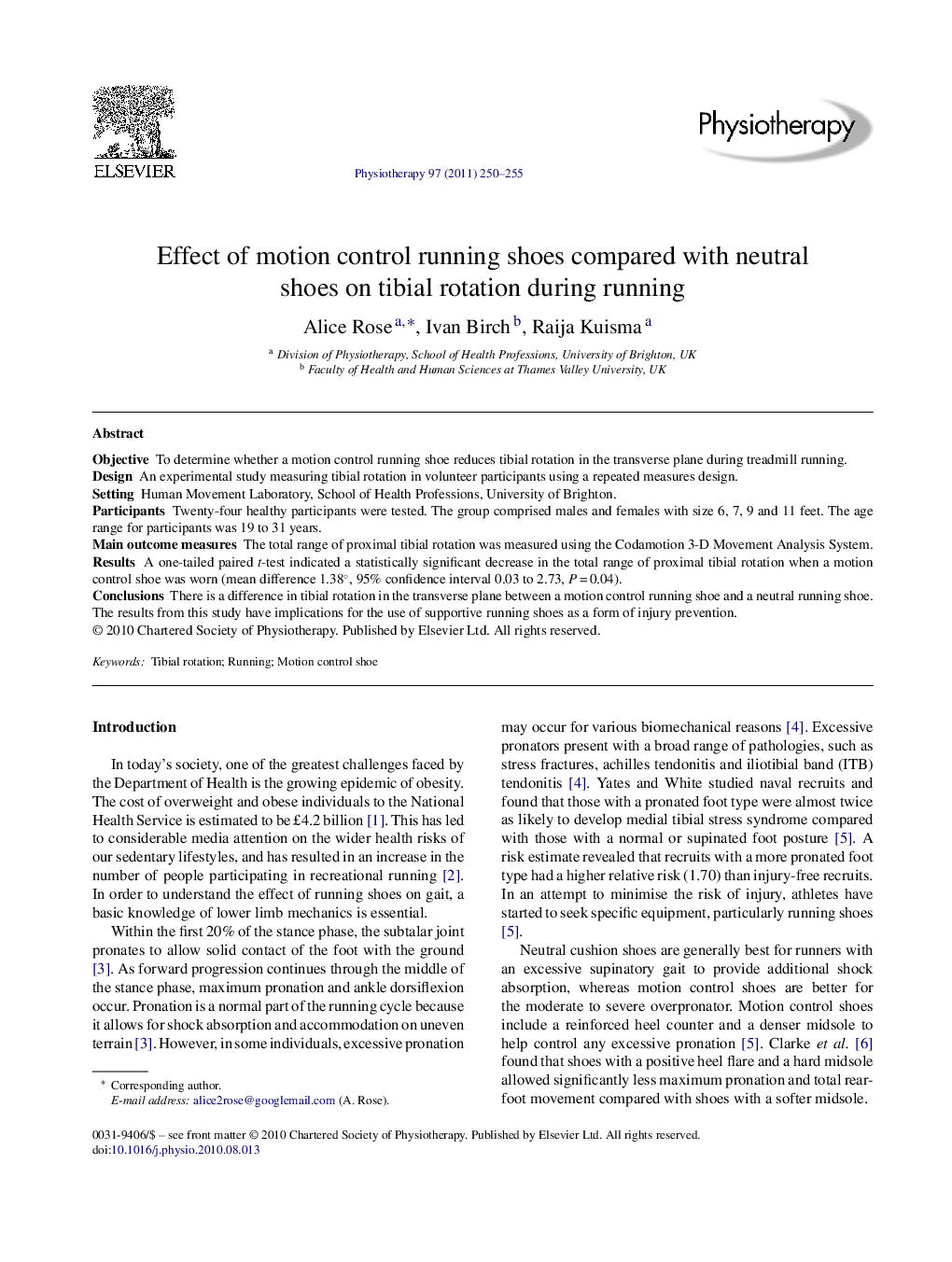| Article ID | Journal | Published Year | Pages | File Type |
|---|---|---|---|---|
| 2627472 | Physiotherapy | 2011 | 6 Pages |
ObjectiveTo determine whether a motion control running shoe reduces tibial rotation in the transverse plane during treadmill running.DesignAn experimental study measuring tibial rotation in volunteer participants using a repeated measures design.SettingHuman Movement Laboratory, School of Health Professions, University of Brighton.ParticipantsTwenty-four healthy participants were tested. The group comprised males and females with size 6, 7, 9 and 11 feet. The age range for participants was 19 to 31 years.Main outcome measuresThe total range of proximal tibial rotation was measured using the Codamotion 3-D Movement Analysis System.ResultsA one-tailed paired t-test indicated a statistically significant decrease in the total range of proximal tibial rotation when a motion control shoe was worn (mean difference 1.38°, 95% confidence interval 0.03 to 2.73, P = 0.04).ConclusionsThere is a difference in tibial rotation in the transverse plane between a motion control running shoe and a neutral running shoe. The results from this study have implications for the use of supportive running shoes as a form of injury prevention.
